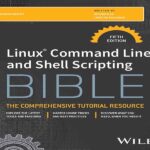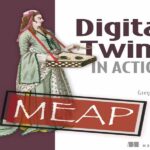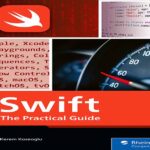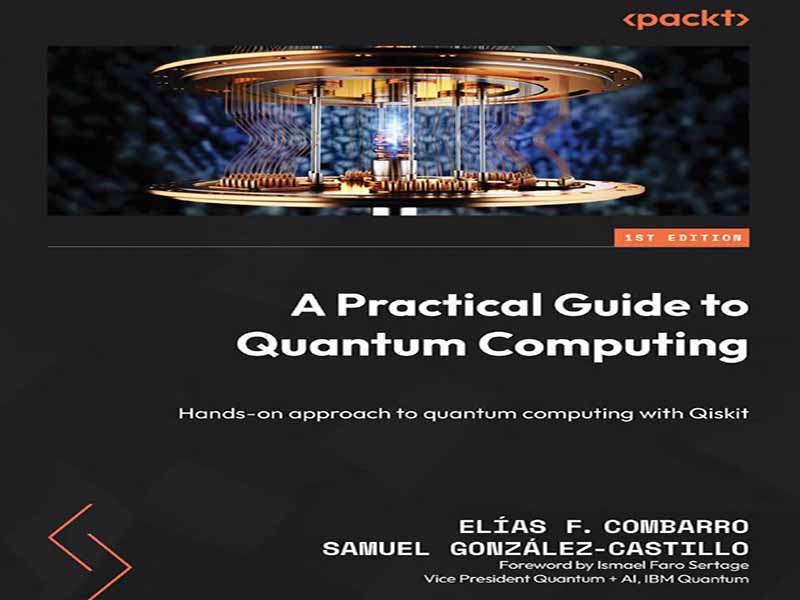- عنوان کتاب: A Practical Guide to Quantum Computing -Hands-on approach to quantum computing with Qiskit
- نویسنده: Elías F. Combarro, Samuel González-Castillo
- حوزه: محاسبات کوانتومی
- سال انتشار: 2025
- تعداد صفحه: 512
- زبان اصلی: انگلیسی
- نوع فایل: pdf
- حجم فایل: 2.69 مگابایت
تقریباً سه سال پیش، ما نشستیم تا یک کتاب کوچک (خب، در آن زمان، فکر میکردیم کوچک باشد) با عنوان «راهنمای عملی برای یادگیری ماشین کوانتومی و بهینهسازی کوانتومی» بنویسیم. این یک ماجراجویی جدید، هیجانانگیز و فراموشنشدنی بود و کلی لذت بردیم چون آن را… برای خودمان نوشتیم. کلیشهای است که بگوییم باید کتابی بنویسید که دوست دارید بخوانید، اما چه میتوانیم بگوییم؟ همه ما طرفدار کلیشهها هستیم و این کاری بود که ما انجام دادیم. ما کتابی را نوشتیم که وقتی شروع به مطالعه یادگیری ماشین کوانتومی و بهینهسازی کوانتومی کردیم، دوست داشتیم آن را بخوانیم. کتابی با دقت ریاضی، زیرا شما نمیتوانید محاسبات کوانتومی را بدون فرمولها درک کنید، بلکه با کدی که میتوانید برای به دست آوردن نتایج اجرا کنید، زیرا محاسبات کوانتومی باید در درجه اول در مورد محاسبات باشد. بنابراین ما کتاب را عمدتاً برای خودمان نوشتیم… و هنوز نمیتوانیم باور کنیم که چه تعداد از مردم روش ما برای توضیح محاسبات کوانتومی را مفید و حتی سرگرمکننده یافتند. از زمان انتشار کتاب، از بسیاری از خوانندگان بازخورد دریافت کردهایم که کتاب را دوست داشتند و در کمال تعجب، مطالب بیشتری میخواستند. در عین حال، محاسبات کوانتومی محبوبیت زیادی پیدا کرده است. در چند سال گذشته، افراد بیشتری به یادگیری نحوه برنامهنویسی کامپیوترهای کوانتومی علاقهمند شدهاند و تعداد دورههای آموزشی در این زمینه که توسط دانشگاههای سراسر جهان ارائه میشود، به صورت تصاعدی افزایش یافته است. علاوه بر این، با اعلام سال ۲۰۲۵ توسط سازمان ملل متحد به عنوان سال بینالمللی علوم و فناوری کوانتومی، این روند به احتمال زیاد ادامه یافته و چند برابر خواهد شد. به همه این دلایل، حتی اگر معتقد بودیم که نوشتن کتاب «راهنمای عملی برای یادگیری ماشین کوانتومی و بهینهسازی کوانتومی» یک ماجراجویی بینظیر بوده است، وقتی افراد فوقالعاده Packt دوباره با ما تماس گرفتند و پرسیدند که آیا ما علاقهمند به نوشتن کتاب جدیدی هستیم یا خیر، فکر کردیم که این یک ایده درخشان است. در واقع، ما هنوز یک یا دو چیز برای نوشتن در مورد محاسبات کوانتومی داشتیم، پس چرا که نه؟ در کتاب قبلی خود، تصمیم گرفتیم بر روی چیزی که آن را الگوریتمهای کوانتومی «مدرن» مینامیم تمرکز کنیم: الگوریتمهای وردشی، آنیلینگ کوانتومی و سایر تکنیکهایی که سعی میکنند از نوع کامپیوترهای کوانتومی موجود امروزی در کارهایی مانند طبقهبندی دادهها و بهینهسازی ترکیبی به خوبی استفاده کنند. اما، در واقع، توسعه محاسبات کوانتومی به عنوان یک حوزه علمی با در نظر گرفتن این نوع کاربردها آغاز نشد. الگوریتمهایی مانند الگوریتمهای ارائه شده توسط گروور، شور و دیگر متفکران، کاملاً متفاوت از الگوریتمهایی هستند که ما در کتاب قبلی خود ارائه دادیم… اما به همان اندازه مهم و جذاب هستند. در کتاب «راهنمای عملی برای یادگیری ماشین کوانتومی و بهینهسازی کوانتومی»، تصمیم گرفتیم از بسیاری از کاربردهای شگفتانگیز محاسبات کوانتومی صرف نظر کنیم تا بر این الگوریتمهای کوانتومی مدرن تمرکز کنیم. و اگرچه ما مطمئناً عاشق همه پیشرفتهای جدیدی هستیم که جامعه محاسبات کوانتومی در سالهای اخیر به آن دست یافته است، اما همیشه کمی پشیمان بودهایم که نتوانستهایم الگوریتمها و پروتکلهای اساسیتر دیگری را نیز در آن بگنجانیم. درک چگونگی عملکرد تبدیل فوریه کوانتومی یا چگونگی دستیابی به تلهپورت کوانتومی نه تنها به خودی خود جذاب است، بلکه برای درک آنچه رایانههای کوانتومی میتوانند انجام دهند و نحوه انجام آن بسیار مهم است. بدیهی است که توانایی به کارگیری مدارهای وردشی برای یادگیری الگوها در مجموعه دادهها یا یافتن حالتهای پایه همیلتونیها بسیار عالی است، اما اگر تا به حال نام الگوریتم دویچ را نشنیدهاید یا نمیدانید چگونه جستجوی گروور را پیادهسازی کنید، درک شما از محاسبات کوانتومی ناگزیر ناقص خواهد بود. با کتابی که اکنون در دست دارید، سعی میکنیم چارهای برای این مشکل ارائه دهیم. تمرکز ما اکنون بر مبانی محاسبات کوانتومی است. به نوعی، میتوانید این کتاب جدید را به عنوان پیشدرآمد کتاب قبلی ما در نظر بگیرید. اگر قبلاً «راهنمای عملی برای یادگیری ماشین کوانتومی و بهینهسازی کوانتومی» را خواندهاید، در اینجا مفاهیمی را خواهید یافت که از قبل در مورد آنها میدانید. و چیزهای بیشتری در مورد آنها خواهید آموخت، همانطور که پس از آشنایی با اوبی وان کنوبی و آناکین اسکایواکر در سهگانه اصلی جنگ ستارگان، هنگام تماشای «تهدید شبح» چیزهای بیشتری در مورد آنها آموختید. و نکته عالی این است که اگر هرگز کتاب قبلی ما را نخواندهاید، چیزی را از دست نخواهید داد! رویکرد ما برای توضیح مباحث مطرحشده در این کتاب، اساساً همان رویکردی است که در «راهنمای عملی یادگیری ماشین کوانتومی و بهینهسازی کوانتومی» دنبال کردیم. ما کاملاً از ابتدا شروع میکنیم و هیچ دانشی از فیزیک کوانتومی را فرض نمیکنیم. در واقع، میتوانیم به شما اطمینان دهیم که فیزیک کوانتومی برای درک این کتاب حتی کمتر از کتاب قبلی ما ضروری است. و شما نیازی به دانستن ریاضیات زیادی هم ندارید – فقط برخی مفاهیم جبری اولیه، مانند ماتریس و بردار چیستند و نحوه ضرب آنها. ضمناً، اگر به یادآوری این مفاهیم یا سایر مفاهیم ریاضی نیاز دارید، همیشه میتوانید به پیوستهای انتهای کتاب مراجعه کنید. یکی دیگر از ویژگیهای کلیدی رویکرد ما برای معرفی مفاهیم این است که ما قاطعانه به … اعتقاد داریم.
Almost three years ago, we sat down to write a little book (well, at that time, we thought it would be little) titled A Practical Guide to Quantum Machine Learning and Quantum Optimization. It was a new, exciting and unforgettable adventure, and we had tons and tons of fun because we made it. . . for us. It is a cliché to say that you should write the book that you would like to read, but, what can we say? We are all for clichés and that’s what we did. We wrote the book that we would’ve liked to read when we started studying quantum machine learning and quantum optimization. A book with mathematical rigor, because you cannot understand quantum computing without all the formulas, but also with code that you can run to obtain results, because quantum computing should be, first and foremost, about computing. So we wrote the book mainly for us. . . and we still can’t believe how many people found our way of explaining quantum computing useful and even entertaining. Since the book was published, we’ve received feedback from many readers that liked the book and, to our surprise, wanted more. At the same time, quantum computing has surged in popularity. In the last few years, more and more people have became interested in learning how to program quantum computers and the number of courses on the topic offered by universities all over the world has grown exponentially. Moreover, with 2025 proclaimed by the United Nations as the International Year of Quantum Science and Technology, this trend will very likely continue and multiply. For all these reasons, even if we believed that writing A Practical Guide to Quantum Machine Learning and Quantum Optimization had been a once-in-a-lifetime adventure, when the wonderful people at Packt reached to us again wondering whether we’d be interested in writing a new book, we thought that it was a brilliant idea. In fact, we still had a thing or two to write about quantum computing, so why not? In our previous book, we decided to focus on what we call “modern” quantum algorithms: variational algorithms, quantum annealing, and other techniques that try to put the kind of quantum computers that are available today to good use in tasks such as data classification and combinatorial optimization. But, in fact, the development of quantum computing as a field did not start with these kinds of applications in mind. Algorithms such as the ones proposed by Grover, Shor, and other visionaries, are quite different from the ones that we presented in our previous book. . . but equally important and fascinating. In A Practical Guide to Quantum Machine Learning and Quantum Optimization we decided to skip many wonderful applications of quantum computing to focus on these modern quantum algorithms. And, though we of course love all the new developments that the quantum computing community has come up with in recent years, we’ve always had a bit of a regret for not having been able to include other, more foundational algorithms and protocols. Understanding how the quantum Fourier transform works or how quantum teleportation is achieved is not only fascinating in itself, but crucial to comprehend what quantum computers can do and how they do it. It is obviously great to be able to apply variational circuits to learn patters in datasets or to find ground states of Hamiltonians, but if you’ve never heard of Deutsch’s algorithm or you do not know how to implement Grover’s search, your grasp of quantum computing will be inevitably incomplete. With the book that you now hold in your hands, we try to put a remedy to that. Our focus is, now, on the foundations of quantum computing. In some sense, you could think of this new book as a prequel to our previous one. If you’ve already read A Practical Guide to Quantum Machine Learning and Quantum Optimization, you will find here some concepts that you already know about. And you will learn much more about them, in the same way that you learned much more about Obi-Wan Kenobi and Anakin Skywalker when you watched The Phantom Menace after being acquainted with them from the original Star Wars trilogy1. And the great thing is that, if you’ve never read our previous book, you will not miss anything! Our approach to explaining the topics covered in this book is, essentially, the same that we followed in A Practical Guide to Quantum Machine Learning and Quantum Optimization. We start completely from scratch and we do not assume any knowledge of quantum physics. In fact, we can assure you that quantum physics is even less necessary to understand this book than it was for our previous one. And you don’t need to know a lot of math either—just some basic algebraic concepts, such as what a matrix and a vector are, and how to multiply them. By the way, if you need a refresher on these or other mathematical concepts, you can always refer to the Appendices at the end of the book. Another key characteristic of our approach to introducing concepts is that we firmly believe in the importance of a gradual progression—from simple ideas to more complex ones—allowing you to build confidence and understanding step by step. We start very humbly, focusing on a simple qubit. And we spend a lot of time studying one-qubit systems before moving further. But we think you’ll find this approach helpful in developing a deep understanding that serves as a solid foundation for more complex algorithms and techniques.
این کتاب را میتوانید از لینک زیر بصورت رایگان دانلود کنید:
Download: A Practical Guide to Quantum Computing




































نظرات کاربران